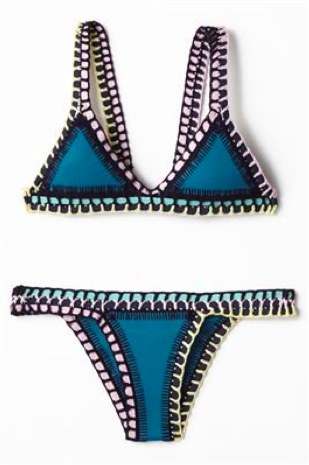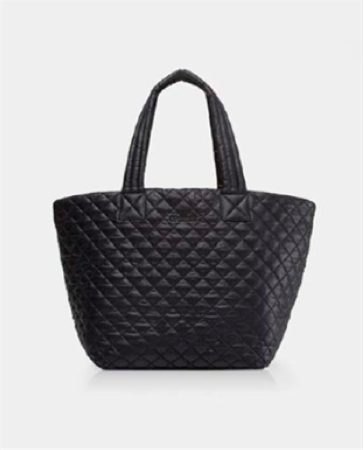- About
- Subscribe Now
- New York,
January 30, 2019

 Milton Springut is a partner at Springut Law PC
Milton Springut is a partner at Springut Law PC
Designs are a crucial element to fashion – a design that stands out from the crowd can both make a fashion statement and drive demand.
But a successful design is often quickly followed by copying and knockoffs that can dilute and even destroy the success of what was a fashion icon.
Fashion companies look to intellectual property law to protect their designs. Among the available legal protections is trade dress – where the design itself functions as a trademark, distinguishing the product as emanating from one designer or fashion house.
While trade dress can be a powerful form of legal protection, it has rigorous legal requirements, and a marketer seeking such protection needs to exploit a smart strategy to gain and maintain such protection.
Second that
Two recent cases provide important insights in maximizing the chances of gaining such protection.
Every trademark, to be valid, must be “distinctive,” which means that it must be able to distinguish the goods as those of one particular company or manufacturer.
In 2000, the United States Supreme Court ruled that for the design of a product to function as a trademark, it must have achieved what is known as “secondary meaning,” also called “acquired distinctiveness.” This means that, through promotion and sales, its consuming base closely associates the design with a single company.
Later cases have taught that “secondary meaning” needs to be achieved only in a particular niche market – for example, a particular economic niche or type of product such as watches selling for more than $5,000.
Generally, it takes considerable time for secondary meaning to develop. But a recent case suggests that in the age of social media, secondary meaning can develop and be evidenced much more quickly.
Be keen
Fashion designer Ipek Irgit created a distinctive bikini design, sold under the brand name Kiini. She introduced her line in mid-2013. Sales were modest, until she received an endorsement on Instagram by Dree Hemingway, who posed in one of her bikinis in a photo captioned “Thank you for my Kiini!!”
After that, the design was featured in fashion magazines such as Vogue, and sales took off.
 Kiini bathing suit
Kiini bathing suit
Kiini later brought two suits, one in the Central District of California against Victoria’s Secret, and one in the Sourthern District of New York against Neiman Marcus, both of which were claimed to have knocked off its distinctive designs. Both cases eventually settled.
The Kiini lawsuits highlight the importance of maintaining good records of media comments and exposure about the product and/or the design.
For example, in June 2014, People magazine called the design “the hottest bikini this summer.” An archive of such comments can go a long way to convincing a court that a design has achieved “secondary meaning.”
Less successful was the trade dress suit brought by handbag company MZ Wallace.
Not in the bag
MZ Wallace sells a nylon handbag bearing a quilted design:
 MZ Wallace handbag
MZ Wallace handbag
The brand claimed that this design was protected by trade dress rights, and brought suit in the Southern District of New York against a rival manufacturer that it claimed was marketing a knockoff. But a recent court decision after trial rejected this assertion, finding that MZ Wallace had failed to show that its design had achieved trademark status.
The court’s decision highlighted three deficiencies:
Survey evidence: MZ Wallace failed to conduct a consumer survey, which is the most powerful evidence of public association of a design with one company.
The defendant introduced its own survey, and the results were devastating. The survey canvassed 200 women who were in the market for similarly priced bags – and only 11 percent identified the design as emanating from a single source. And half of those incorrectly identified the source as Vera Wang. Only two survey respondents – 1 percent – identified the bags as an MZ Wallace bag.
MZ Wallace would have been well advised to conduct its own survey prior to bringing suit, at least a “pilot” survey – one run on a smaller number of respondents – to test the waters and try to ascertain the level of public recognition of its design.
Many surveys today are conducted online, which allows them to be run more cheaply and reach a wider audience. The defendant’s survey in the MZ Wallace case was conducted online.
Third party uses: The court also noted that, apart from the defendant, there were many third parties who used a quilted design.
MZ Wallace had sent cease-and-desist letters to some of these parties, and had partial success in maintaining exclusivity. But there still remained many competitive bags at various price points on the market with similar designs.
This highlights the importance of vigorous enforcement efforts in maintaining trade dress or any other trademark rights.
Ultimately, trademark rights depend on public perception.
At the extreme, even a distinctive design or word can become generic with the attendant loss of rights. The most famous example is Aspirin, once a brand name. Through public use, it became the generic term for acetylsalicylic acid.
Changing trade dress definitions: Federal courts universally require that a party claiming trade dress rights be able to define its claimed protected design in clear terms, so that competitors can know what they can and cannot do, and that courts can properly evaluate whether the claimed trade dress is valid and whether the defendant’s design infringes.
A company claiming trade dress rights should carefully consider the elements that make up what it claims is its protected design, because it potentially will have to maintain this definition against many others.
To its chagrin MZ Wallace learned that changing a trade dress definition can undermine its claim to a “distinctive” design.
The company had filed an application with the United States Patent and Trademark Office to register its trade dress that used a different definition than that it asserted in the case.
Moreover, MZ Wallace’s cease-and-desist letters sent over the years to third parties used differing and shifting definitions of the claimed trade dress. This negatively impressed the court. Without a clear and consistent definition, there was no reason to think that MZ Wallace had achieved the requisite level of recognition for its design.
This highlights the importance of working with counsel to create a rigorous definition that can be used in both applications to register the trade dress, enforcement letters and litigation.
FOR ALL INTELLECTUAL property rights, it is always highly advisable to invest early on in an effort to lay the foundation for securing those rights. That is especially the case for trade dress rights, which depend heavily on public recognition and association of the design with the designer or fashion company.
The recent Kiini and MZ Wallace cases point out important lessons for companies seeking such protection to ensure that their designs are protected.
Milton Springut is a partner at Springut Law PC, New York. Reach him at ms@springutlaw.com. Mr. Springut's opinions are solely his.
Share your thoughts. Click here